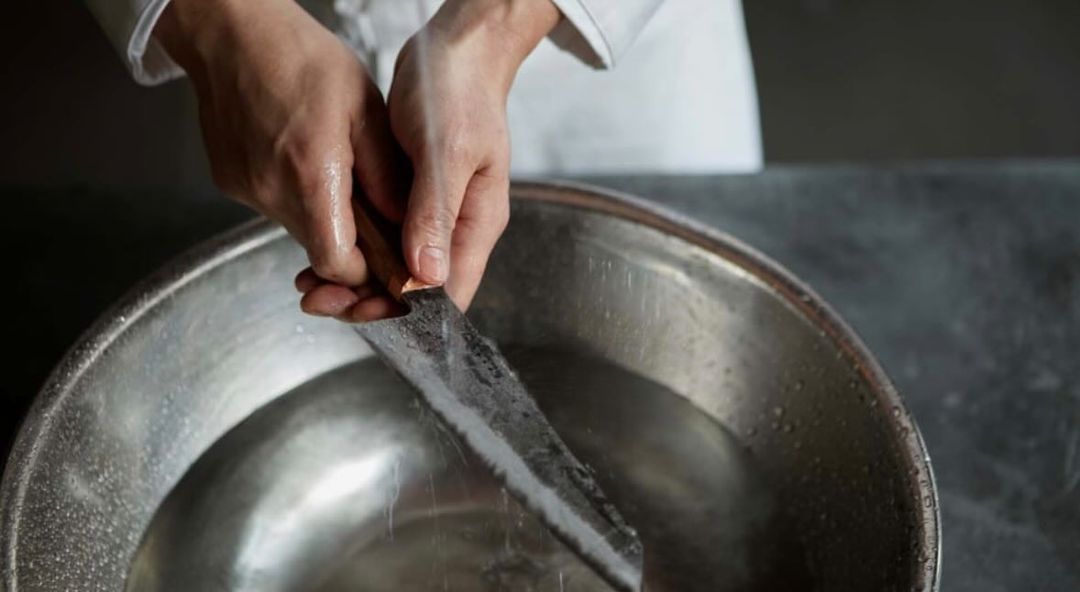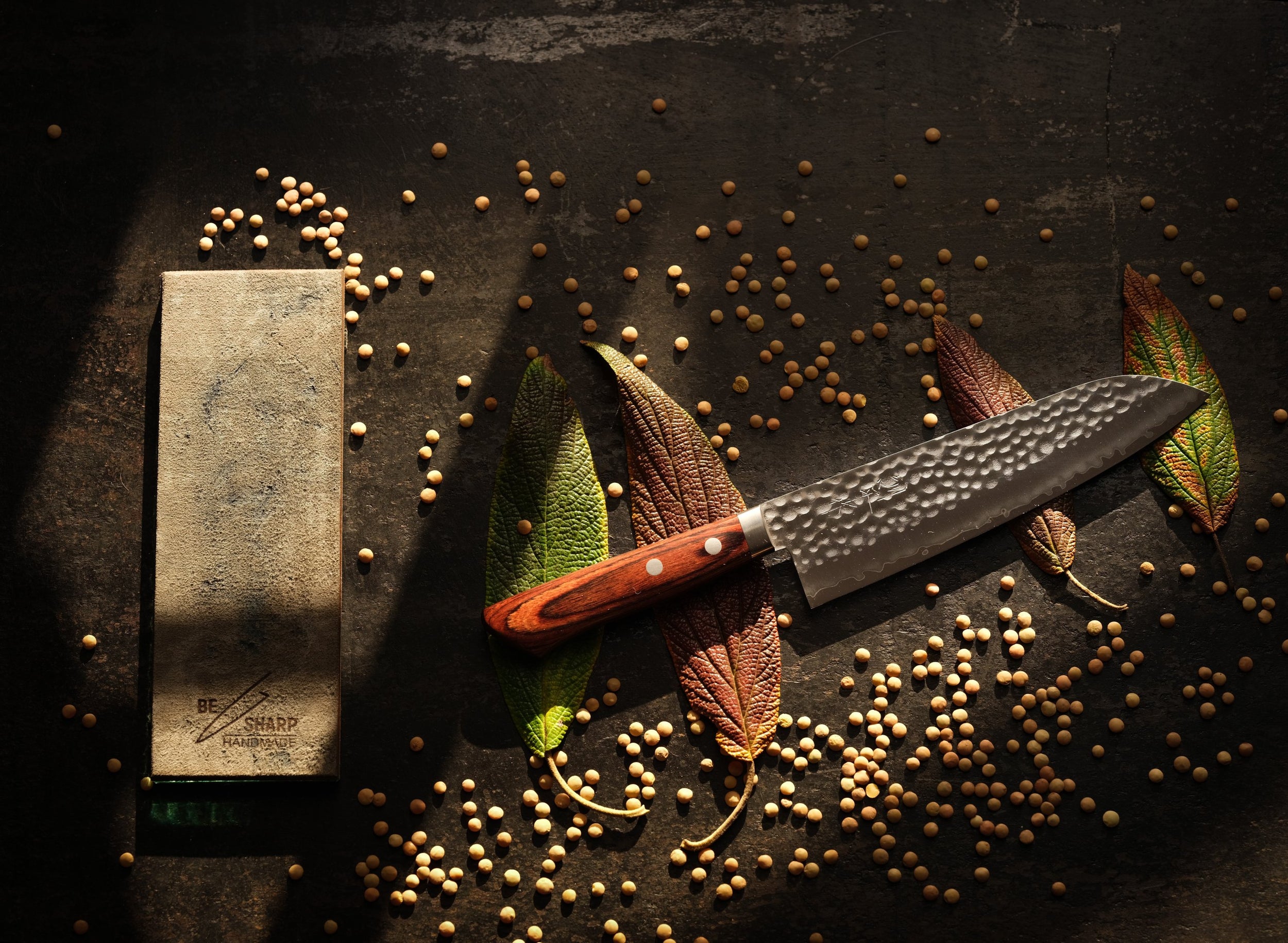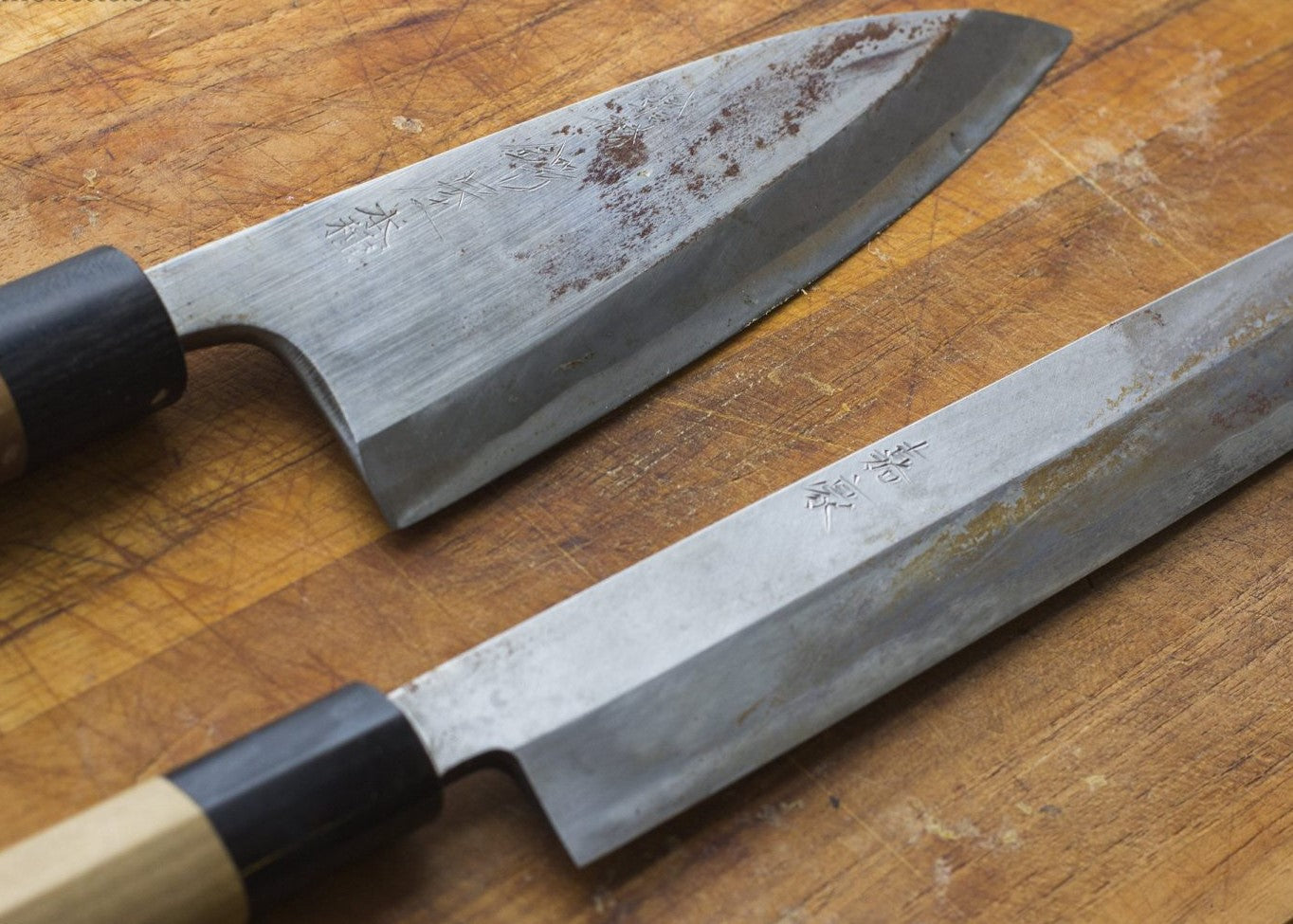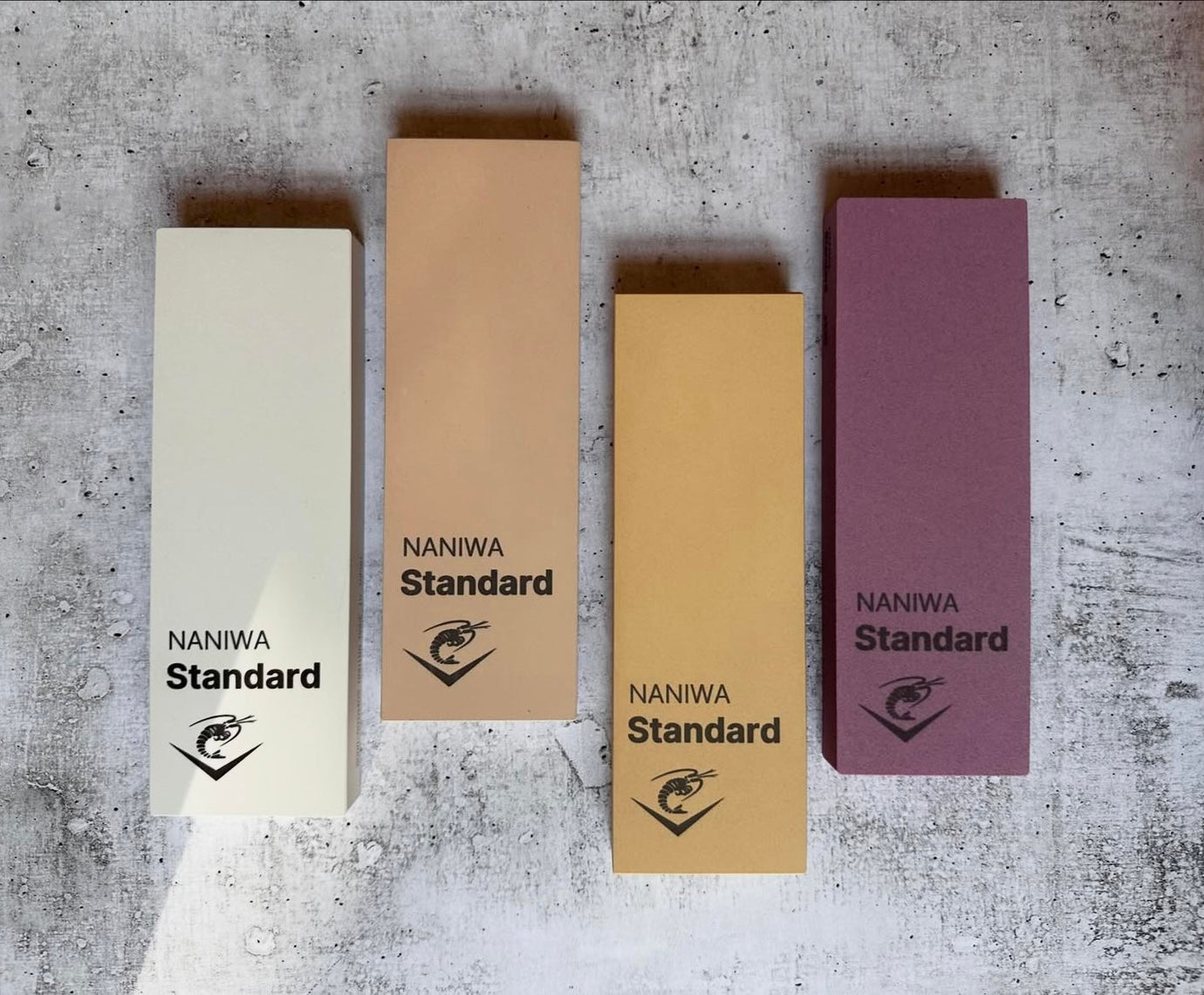Care and storage

With proper maintenance and use, we can significantly extend the life of a Japanese knife. In Japan, it is often the case that a knife is passed down from generation to generation.
Proper use of a knife means performing only those tasks for which the knife is intended. There is a saying in Japan: "What you wouldn't bite with your teeth, don't cut with a knife." We should never use a Japanese knife for cutting frozen food, bones, opening cans or cutting extremely hard parts of food such as Parmesan cheese or pumpkin stems. There are specially designed knives for special tasks such as filleting fish, processing meat with bones or cutting frozen food. In this way, we will ensure that our knife will never get damaged or break, thus extending its life.
Cutting technique is the next thing to pay attention to. The knife should be a tool that does the work for you while your role is to direct it in the right way. This implies sensitive movements of the knife without unnecessary pressure or banging on the board. you must have seen videos on the internet where some chef bangs his knife while chopping mushrooms, it might look interesting but it's not right. Also, you should never use a blade to scrape a board or collect food. A properly sharpened knife has an extremely sharp but also delicate blade that can easily be lost with improper use. This will lead to more frequent sharpening and possibly faster wear on your Japanese knife.

The board you use can have a big impact on your knife. At the outset, we must say that the inventor of glass kitchen tops is the number one enemy of all blades, including Japanese blades. Ideally you should use a wooden board made of soft wood, while in a professional kitchen you must use a plastic or rubber board, of which the rubber ones have a slight advantage as they are gentler on your blade. Definitely avoid glass and those cheap plastic boards that have a rough surface.

Maintenance after use - your knife should be washed and stored in a safe place. We wash the knife with cold or lukewarm water, we may or may not use mild soapy water and the soft side of a sponge or a magic cloth. We should avoid strong abrasive detergents like Cif or Arfa which are not intended for kitchen knives, which can scratch your blade. Never wash a kitchen knife in the dishwasher or with a wire scrubber. In either case, you will ruin the knife and dull the blade completely.



Storage - your kitchen knife should have a special place where you store it. We recommend in the original box, on a kitchen magnet, case, or you can simply wrap it in a cloth and put it away. A knife should never be placed among other kitchen utensils, especially not in a drawer with escaige because it can lose its sharpness from knocking and bumping.

Maintaining knife sharpness - using a leather ceiling or massage. The leather sheath is great because it's easy to use and you can't damage your knife. The task is straightening and fine polishing the blade. Massat, on the other hand, requires a little more skill, but can also be useful. The task is the same as with the leather ceiling. For Japanese knives, metal masats do not have much effect because the steel in the knife is harder than masats, for them the use of ceramic masats is recommended. In other words, by using a leather ceiling or massat, you reduce the sharpness and prolong the sharpening time. It is important to note that you cannot sharpen a completely dull knife with a masa or a leather ceiling.

Sharpening knives. If you want to sharpen your knife yourself, you need a sharpening stone and a leather sheath. Sharpening involves removing the steel from the knife and forming a new blade, so you should be properly informed. If you want a professional sharpening service, you can bring the knife to us, and we will make sure it is perfectly sharpened for your new gastronomic adventures!

We often get asked how often a Japanese knife should be sharpened, and the answer will depend on all of the above. If you use a Japanese knife correctly, you'll be surprised how long it can stay sharp. Some of our customers bring their knives for sharpening every 6 months, while others need sharpening every 15 days.







